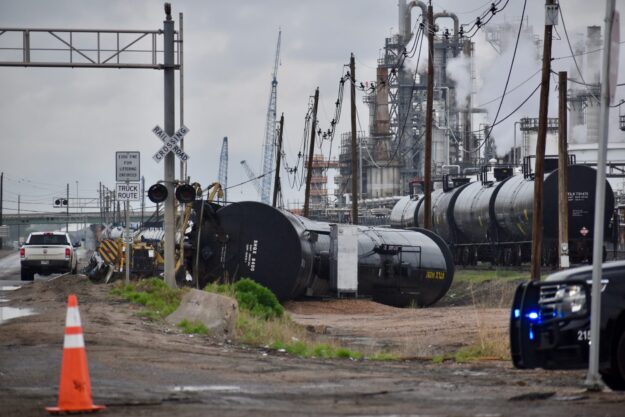By Eric Heinz
Following the catastrophic freight derailment that took place in East Palestine, Ohio, Councilwoman Deborah Ortega revitalized a policy to prevent new development within 100 feet of railroads that ferry hazardous materials.
But because of the negative effects that the policy could have on planned development, Laura Aldrete, the director of Denver’s Community Planning and Development department, wrote that the policy could stifle new development significantly.
The City Council recently voted 5-7 to not approve the bill, with GES representative Councilwoman Candi CdeBaca voting in favor of it.
“Development near railways is a key component of Denver’s growth strategy – which directly connects to our region’s investment in light and commuter rail service,” Aldrete wrote in a recent letter to the City Council. “Denver has 35 light and commuter rail stations, adjacent to freight railways, all of which have a different character and expected density.”
Aldrete also mentioned the Blueprint Denver strategy, adopted in 2019, and the city’s strategy to increase private investment and new development around rail stations.

“To be clear, overall health and safety are critical to all that we do, and we share these comments and questions with the goal of finding meaningful solutions to the challenges and opportunities facing our city as we continue to grow,” Aldrete wrote.
In a recent City Council committee meeting, Ortega revived a proposal from 2021 that would deny permit applications for development within 100 feet of a freight railway unless the application contained certain attestments, including an evacuation plan and mitigation measures.
“We were trying to find a happy medium to figure out how … we continue to allow development to happen while at the same time making sure that the buildings are going to be safe for people to live and work,” Ortega said before the vote to kill the bill took place. “I just want to say that as we have seen more and more derailments happening on our rail corridors, this would not be accepted in the airline industry. We … across this country should be screaming and asking for our congressional delegation to support that federal legislation.”
Ortega said she hosted several meetings with community members, the National Transportation Safety Board and other factions to put together the information for the ordinance. Four “public assembly locations” are within 100 feet of railroads, 10 are within 1,000 feet, and 58 are within a half-mile. Some of them include Empower Field at Mile High, Coors Field, Ball Arena and Elitch Gardens.
Additionally, Ortega provided data from the Denver Office of Emergency Management that stated between 2011 and 2015, the number of railroad shipments carrying hazardous materials tripled one year and quadrupled another.
The committee postponed the proposal to deny permits near railroads with conditions to a later date that has not yet been scheduled. Councilwoman Kendra Black said she has concerns that there aren’t mass evacuation plans in place in the event of a disastrous rail event, but she mentioned that derailments usually happen at grade crossings.
“What is proposed in the bill doesn’t actually solve the problem that has been identified, and that’s what concerns me,” Black said, adding that the studies accompanying the bill did not adequately address the main issues.
Ortega will leave office due to term limits after July 17.

Be the first to comment